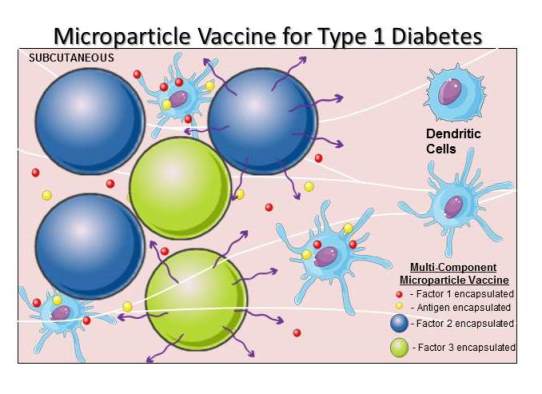Congratulations to Associate Professor Benjamin Keselowsky who was invited to give a talk entitled, “Dendritic Cell Targeting Microparticle Vaccine for Type 1 Diabetes”, at the Federation of Clinical Immunological Societies (FOCIS) Annual Meeting this June in Boston. The full abstract is listed below.
The FOCIS exists to improve human health through immunology by fostering interdisciplinary approaches to both understand and treat immune-based diseases. Initially established as a cross-disciplinary meeting, FOCIS held its first Annual Meeting in 2001. After two successful consecutive meetings, FOCIS incorporated in 2003 as a 501(c)3 organization. Now in its twelfth year of existence, FOCIS has 53 Member Societies, representing roughly 65,000 clinician scientists. A Federation of this size provides a voice for clinical immunologists and ultimately strives to improve patient care.
Abstract: Dendritic cells (DCs) have a critical role in the induction and maintenance of peripheral tolerance. We hypothesize that using particles fabricated from timed-release biodegradable biomaterials (poly lactide-co-glycolide) can deliver combinatorial formulations of encapsulated immunomodulatory agents target with both intracellular and extracellular delivery to DCs in vivo to effect antigen-specific tolerance. Subcutaneously injecting 8 week old NOD mice with the vaccine formulation consisting of the combination of microparticles loaded with insulin (antigen), vitamin D3, GM-CSF and TGF-b1 is capable of preventing the onset of type 1 diabetes in 60% of the mice. In comparison, administering the unloaded particles (negative control), 90% of the mice developed diabetes (10% prevention). Soluble administration of the same dose of the factors prevented diabetes in only 30% of the mice, indicating a robust advantage in the targeting and controlled release provided by the particulate formulation. The response was antigen specific, as administering the factors without the antigen resulted in only 20% prevention, and the fact ors were required, as administering only antigen-loaded particles resulted in only 10% prevention (equivalent to the negative control). Finally, each factor contributed in a cumulative fashion, with TGF-b1 carrying the largest portion of the response (TGF-b1 particles plus insulin particles provided 40% prevention). In vitro data demonstrates the ability of these particles to modulate DCs toward an immature, suppressive state and ongoing work focuses on determining mechanisms of these responses in vivo.
ors were required, as administering only antigen-loaded particles resulted in only 10% prevention (equivalent to the negative control). Finally, each factor contributed in a cumulative fashion, with TGF-b1 carrying the largest portion of the response (TGF-b1 particles plus insulin particles provided 40% prevention). In vitro data demonstrates the ability of these particles to modulate DCs toward an immature, suppressive state and ongoing work focuses on determining mechanisms of these responses in vivo.
